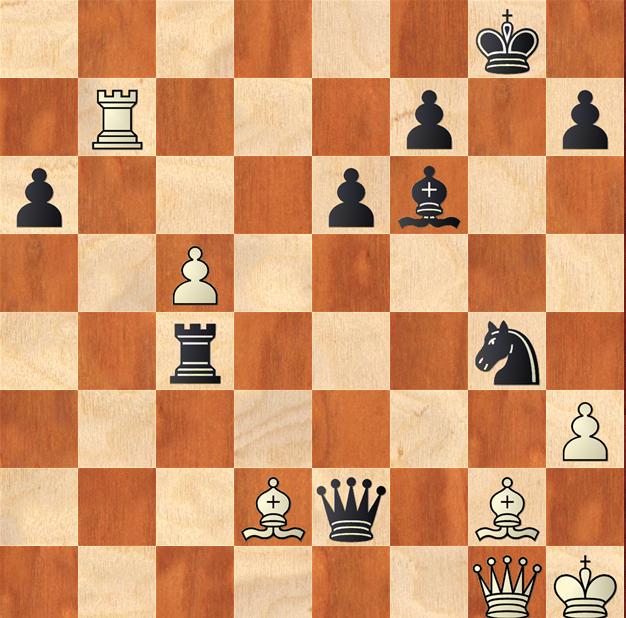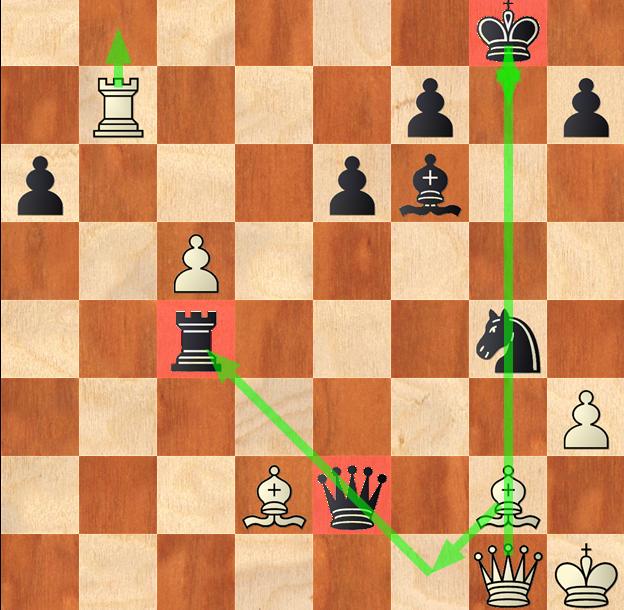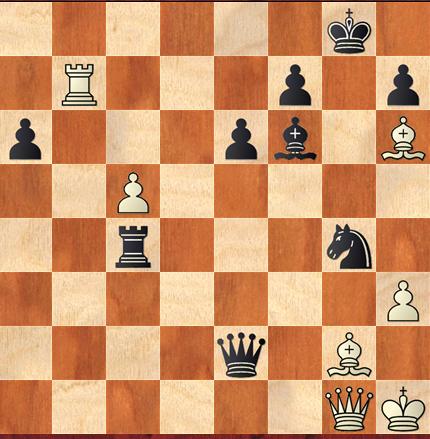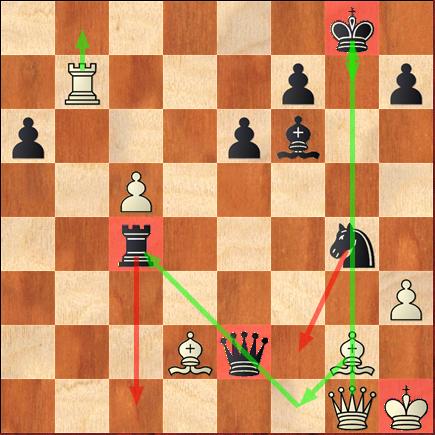In an earlier article about tactics and strategies (Simple tips to master tactics and strategies), we discussed in general about the importance of tactics and strategies. Let us try to understand the importance of tactics through a practical example. This is a game from Bundesliga tournament in 2001:
Look at the position given hereunder, where it is the turn of Black to move.
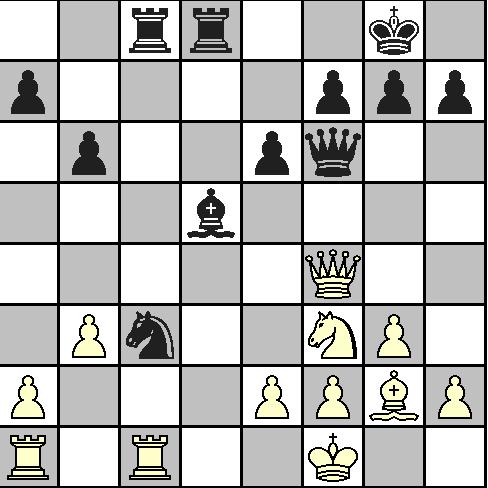
On a curious look at the above position, you will find that the number of pieces each player has is the same. Apart from King and Queen, both players have 1 bishop (in same color), 1 knight, 2 rooks and 6 pawns each.
The black pieces are well developed, especially with Knight at c3 in a very good position, controlling more number of squares, the rooks are more centralized and the bishop is also in a good position. In contrast, the white rooks are not in favorable position and the white bishop at g2 is more or less blocked by the knight at f3. The King at f1 is also vulnerable relatively moving closer to the center.
In the normal course of thinking, one might be inclined to make the following moves:
1.….. Qxf4 – (if black does not take the queen, white may capture the queen)
2. .gxf4 b5 (to support the Knight at c3)
Now, let us pause for a moment and think of any possible moves that can give an opportunity to make it advantageous to the black pieces.
Some tactics that might be of use must be explored. Tactics need not be a long one. They might not yield the desired results always, simply because the opponent will also think on similar lines and try to have his own tactics based on his own intuition.
So, tactics basically are for a short duration of may be two or three moves with some target in mind. Let us see whether we can use any such tactic and deviate from the normal course of moves. This is what Grandmasters make – consider the positional factors, analyze and foresee the moves and then make a move.
Let us revisit the pieces and consider them in a different angle – positional factors.
Take a look at the back rank of White – the 1st rank. The King at f1 is protected by two rooks – one at a1 and the other at c1. Look at the rook at c1. It is vulnerable given that the protection for that rook from Queen at f4 might not be there once the queens are exchanged. The rook at c1 is protected by rook at a1 as well. Now, taking advantage of the probable vulnerability of the back ranks of white, we can think of a tactic to disturb the back rank of White.
Again, look at the black rook at c8. If the knight at c3 is removed, black rook at c8 can attack the white rook at c1 and give a check by distracting the other rook. So, black might consider distracting the rook at a1 by taking the pawn at a2 by Knight at c3.
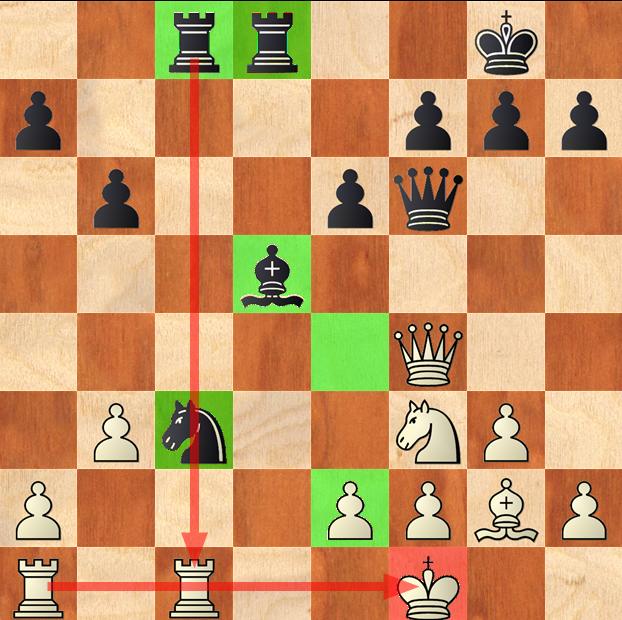
The white has two options here – either it can take the black knight by rook at a1 or else use the rook at c1 to remove the black rook at c8. If white resorts to c8 x c1, then instead of taking the white rook at c8 by black rook at d8, black can consider taking the rook at a1 by queen at f6. In such a way, more than one move and counter move must be considered as tactics.
In this case, black knight decided to take up pawn at a2 and the tactics of distracting the rooks at back rank worked out well.
Black went on to win the game as given hereunder:
22 ….. Nxa2
23 Rxa2 Qxf4
24 Rxc8 Qxf6
25 Rxd8+ Qxd8
26 Rxa7 Bxb3
27 Nd4 Bd5
28 e3 g6
29 f4 b5
30 Bxd5 Qxd5
31 h4 b4
32 Rc7 b3
33 Nxb3 Qf3+




